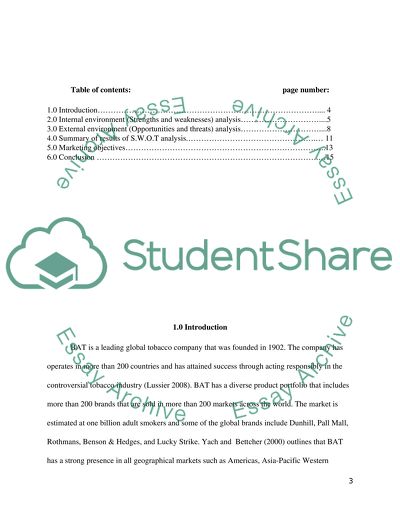Cite this document
(“Marketing Audit and set Marketing Objectives for British American Assignment”, n.d.)
Marketing Audit and set Marketing Objectives for British American Assignment. Retrieved from https://studentshare.org/marketing/1660858-marketing-audit-and-set-marketing-objectives-for-british-american-tobacco-company
Marketing Audit and set Marketing Objectives for British American Assignment. Retrieved from https://studentshare.org/marketing/1660858-marketing-audit-and-set-marketing-objectives-for-british-american-tobacco-company
(Marketing Audit and Set Marketing Objectives for British American Assignment)
Marketing Audit and Set Marketing Objectives for British American Assignment. https://studentshare.org/marketing/1660858-marketing-audit-and-set-marketing-objectives-for-british-american-tobacco-company.
Marketing Audit and Set Marketing Objectives for British American Assignment. https://studentshare.org/marketing/1660858-marketing-audit-and-set-marketing-objectives-for-british-american-tobacco-company.
“Marketing Audit and Set Marketing Objectives for British American Assignment”, n.d. https://studentshare.org/marketing/1660858-marketing-audit-and-set-marketing-objectives-for-british-american-tobacco-company.


